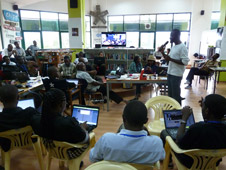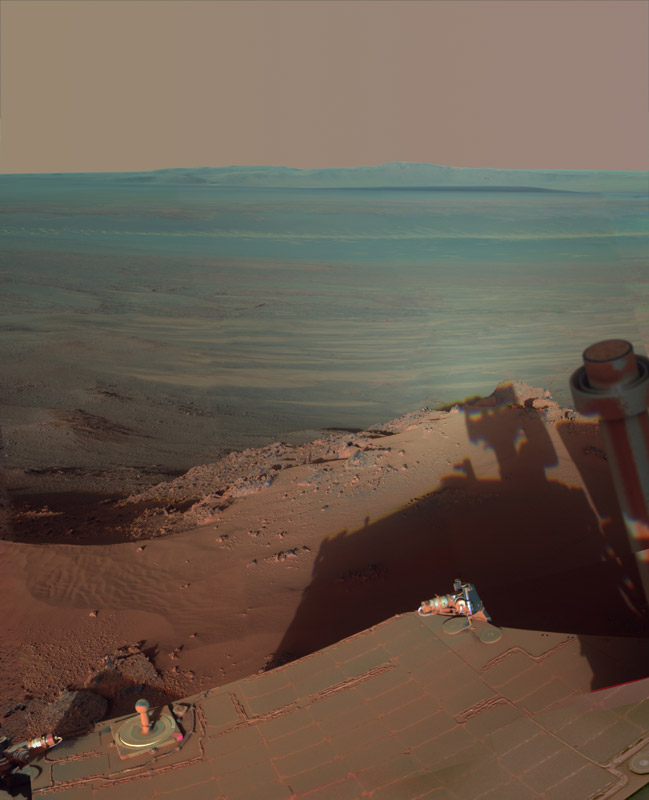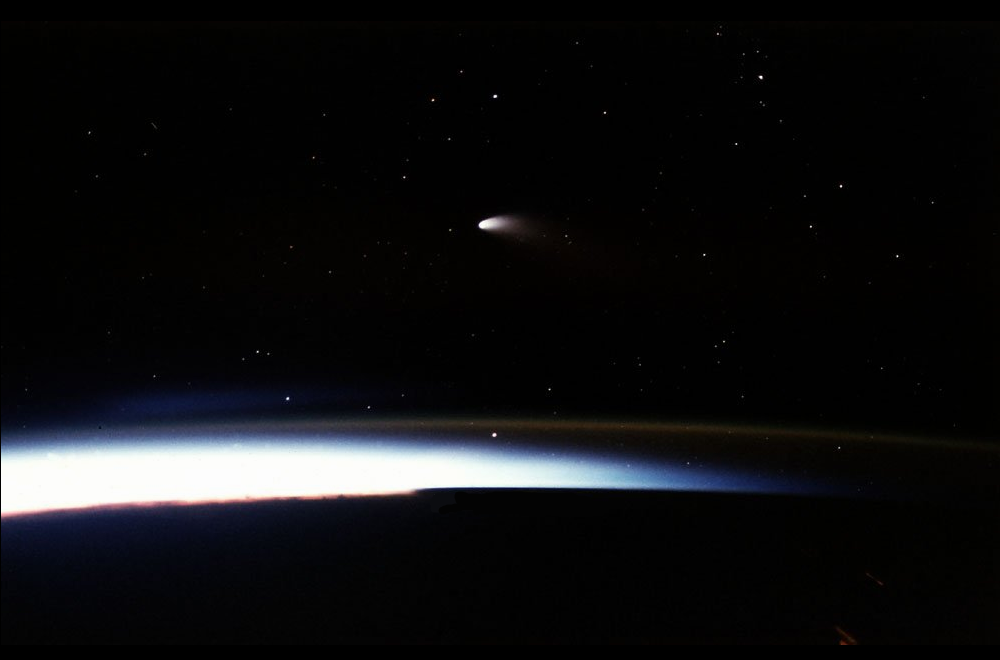
International Space Apps Challenge participants get to work on solving challenges at the iHub in Nairobi, Kenya on April 21, 2012. Photo Credit: Image courtesy of Sean Herron.
May 30, 2012 — Vol. 5, Issue 5
Lessons from a global innovation event may inspire new ways to solve project-based challenges concurrently.
When Paul MacCready decided to contend for the 1959 Kremer Prize, which would reward the first person to fly a human-powered plane across the English Channel, he had an insight about how to approach the engineering challenge: fail fast. Instead of taking months or years to build and test a specific design, MacCready took hours or maybe days by using materials that would allow him to rebuild a failed plane quickly. MacCready and his Gossamer Condor aircraft won the prize because he was able to innovate within a fraction of the time of his competitors—iterating design modifications, gaining new knowledge, and learning from failure faster than the rest.
Decades later, on the morning of April 21, 2012, over 2,000 registered participants from 7 continents, 17 countries, 24 cities, and 111 organizations drew upon the same innovative spirit that inspired MacCready. Together, participants tackled 40-plus challenges posed by NASA over the course of one weekend during the first International Space Apps Challenge. (Forty-eight hours is not a lot of time, but remember that in 1970, Apollo 13 mission engineers devised a solution for the carbon dioxide filtration problem in just two days.) Challenge statements spanned four main categories—citizen science, software, hardware, and data visualization—and involved mobile app development, infographics, robot design and modification, and educational tools to engage the public in the story of exploration.
At first glance, the benefits from the Space Apps Challenge might only seem to pertain to education, citizen science, and public outreach. Like the Gossamer Condor, though, the Space Apps Challenge can provide insights about the learning process involved in tackling challenges. “NASA is generating incredible amounts of data,” said Elizabeth Walker Sabet, a mass-collaboration project lead from SecondMuse, which coordinated global operations for the event. “If you put that data out to a diverse community, it enables [NASA] to have numerous and distributed backup teams around the world digging into the data, figuring out what sort of valuable information can come from it and what can be done with it.”
It is difficult to predict in advance the gains from an event like this. “The innovation that can come out of it has the potential to be astounding,” said Brian McLaughlin, a lead for simulator development on the Joint Polar Satellite System, in a Gov2.0 Radio Podcast. “We might get stuff out of the challenge that is completely unexpected.”

International Space Apps Challenge participants discuss the solutions to challenges at the iHub in Nairobi, Kenya on April 22, 2012.
Photo Credit: Image courtesy of Sean Herron.
Beyond the “fail fast” approach, the Space Apps Challenge also demonstrated two other elements valuable to projects. The first is data transparency. Solving a puzzle requires having the pieces first. For each of NASA’s challenge statements, data and content needed to be openly available and accessible. While NASA projects could not release sensitive data to Space Apps innovators, many provided critical information that helped to address specific challenges. “One challenge resulted in the creation of a converter to take satellite image data in a certain format to .png, a more usable format,” said Christopher Gerty, a member of the NASA Open Government Team. “What that did was lower the barrier of entry.”
The second element is partnership. Space Apps enabled new kinds of relationships with NASA. “It was more than just gaining access to data and creating something new,” said Sean Herron, also a member of the NASA Open Government Team. “The participants in Nairobi felt like partners with the United States, with the rest of the world. With events going on all over the globe simultaneously, they felt they were a part of a collective movement to further NASA’s mission, further space exploration.”
“The closest I’ve come to space is through the Internet,” said Allan Onchuru, software developer at iHub, a collective that brings together innovators and entrepreneurs in Nairobi. “I usually work on web and mobile applications, but today I wanted to try out some robotics.”
Leveraging global brainpower over the course of two days resulted in several challenge winners. But for most participants, the event was a beginning, not an end. The International Space Apps Challenge served as a springboard to solve problems, and collaborative technology continues to connect and enable teams of innovators to tackle space exploration challenges.
“(With) the interconnectedness that we have in the world now, you can get people with so many different ideas and experience levels and backgrounds that can approach problems from a perspective that you would never even consider,” said Clay Ellis, a McMurdo Ground Station operator with NASA’s Space Communications Network Services (SCNS) project, in a Gov2.0 Radio Podcast interview. “Just the amount of creativity there is and the hundreds of ways there are to solve problems….This is how problems are going to be solved in the future.”
International Space Apps Challenge participants get to work on solving challenges at the iHub in Nairobi, Kenya on April 21, 2012.
Featured Photo Credit: Image courtesy of Sean Herron.









